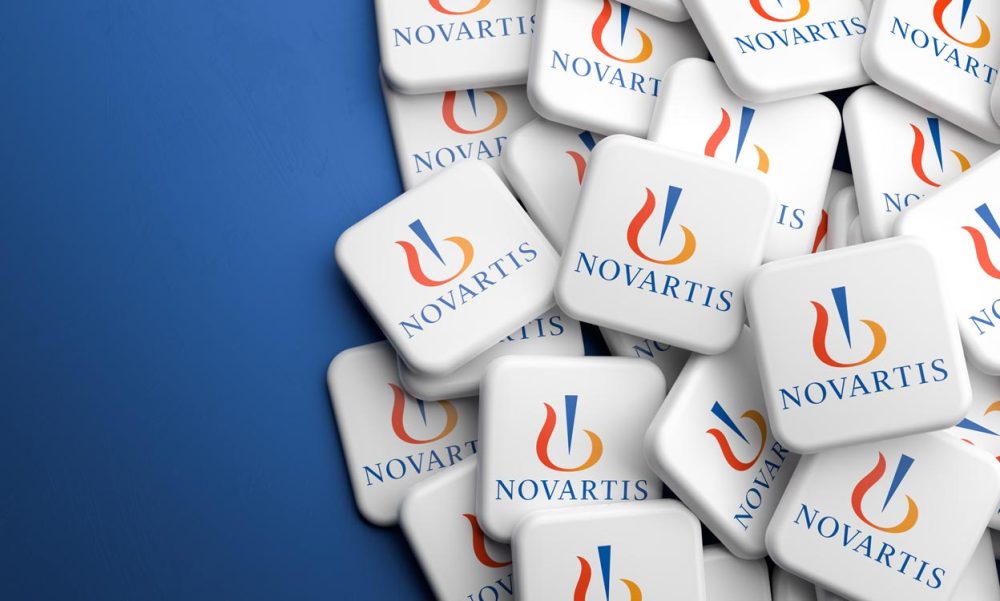Advertisment
New data is presented at MDA meeting of Zolgensma (onasemnogene abeparvovec) from the SMART study for the treatment of spinal muscular atrophy – Novartis

Novartis presented new data that continue to support the clinical benefits of Zolgensma (onasemnogene abeparvovec), the only one-time gene therapy for the treatment of spinal muscular atrophy (SMA). Final data from the SMART study highlight the safety and efficacy profile of Zolgensma in children with SMA weighing greater than 8.5 kg to less than 21 kg, with a mean age of 4.69 years, most of whom (21/24, 87.5%) had discontinued use of another disease modifying therapy at the time of treatment.
The new clinical results supplement emerging real-world experience and use of this innovative therapy in older and heavier children in countries where authorized use is not restricted by age. These data are among a Zolgensma data set being presented during the 2024 Muscular Dystrophy Association (MDA) Clinical and Scientific Conference in Orlando, Florida, March 3 – 6.
“The results from the SMART study provide evidence that Zolgensma is clinically beneficial for older and heavier patients with SMA, many of whom have had prior treatment with another disease-modifying therapy,” said Dr. Hugh McMillan, Pediatric Neurologist. “These data inform the use of Zolgensma in children up to 21 kg, supporting the use of a one-time gene replacement therapy as a therapeutic option for SMA in a broader population.”
The primary study objective was to evaluate the safety and tolerability of Zolgensma in older and heavier patients than were treated in previous clinical studies. The majority of patients in the study experienced increases in transaminases and transient thrombocytopenia; all cases were asymptomatic and managed with appropriate monitoring and treatment, as described in the product labeling. No new safety signals were observed in the study.
Most patients in the SMART study maintained motor milestones observed at baseline throughout the one-year study. The mean increase in total Revised Upper Limb Module (RULM) score was 2 points and a mean increase in total Hammersmith Functional Motor Scale – Expanded (HFMSE) score was 3.7 points. Four patients demonstrated new development milestones at week 52.
“This data – the first Zolgensma open-label clinical study to include older and heavier, as well as previously treated, patients – should build confidence among caregivers and healthcare professionals as they make informed treatment decisions, consistent with their local product label, for the studied patient population,” said Dr. Sandra P. Reyna, Chief Scientific Advisor and Head of Global Medical Engagement for SMA at Novartis. “We remain committed to reimagining possibilities for the SMA community.”
SMART Study ; SMART was a Phase IIIb, open-label, single-arm, multicenter study designed to evaluate the safety, tolerability and efficacy of a one-time IV infusion of Zolgensma in pediatric patients who have symptomatic SMA with bi-allelic mutations in the SMN1 gene, any copy number of the SMN2 gene, and weigh greater than 8.5 kg and less than 21 kg. The study enrolled a total of 24 patients with heterogeneous phenotypes of SMA across three weight brackets (8.5 – 13 kg; >13 – 17 kg; >17 – 21 kg), ranging in age from ~18 months to 9 years (mean age of 4.69 years). Three patients were treatment-naïve to previous SMN-dependent therapies; 21 were treatment-experienced and discontinued risdiplam or nusinersen before enrollment in the study. The SMART study was the first open-label clinical study of Zolgensma to include previously treated patients.
Results :• Increases in transaminases (ALT or AST >3xULN) were observed in the majority of patients (21/24, 87.5%); transient thrombocytopenia were observed in 17/24 (70.8%) patients; all cases were asymptomatic and managed with appropriate treatment. • There were no reported cases of acute liver failure or bilirubin elevations. • Increases in RULM from baseline were demonstrated; mean (SD) increase from baseline at Week 52 was 2.0 (4.0) points. • Increases in HFMSE from baseline were demonstrated; mean (SD) increase from baseline at Week 52 was 3.7 (4.3) points. • Most patients maintained or improved motor milestones from baseline at the time of final analysis. • Nearly all (23/24, 95.8%) patients who could sit with slight support still met this milestone at Week 52. • Three patients achieved the milestone of newly standing with support and one achieved newly walking with support at Week 52. • All patients (6/6, 100%) who could walk at baseline maintained this milestone until end of study.
Zolgensma (onasemnogene abeparvovec) is the only approved gene therapy for the treatment of spinal muscular atrophy (SMA) and the only SMA treatment designed to directly address the genetic root cause of the disease by replacing the function of the missing or non-working SMN1 gene to halt disease progression through sustained SMN protein expression with a single, one-time IV infusion. Zolgensma is now approved in more than 51 countries and more than 3,700 patients have been treated with Zolgensma globally across clinical trials, managed access programs, and in the commercial setting.





